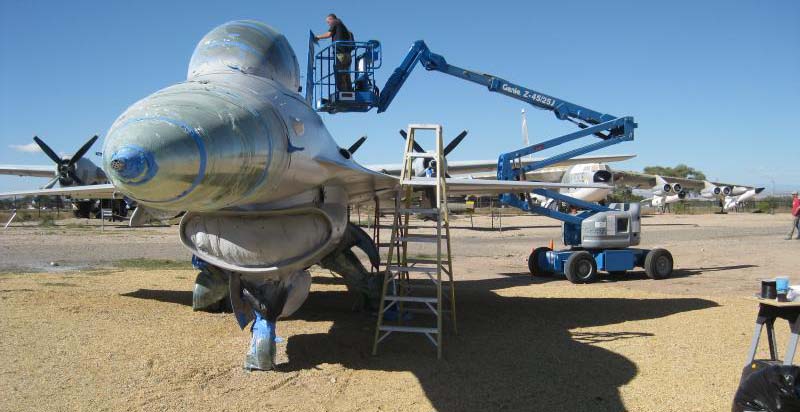What do you do when you have an F-16 sitting around, and want to have some blinking navigation lights? We know of exactly one way to blink a light, and apparently so does [Dr. Craig Hollabaugh]. When asked to help restore an F-16 for the National Museum of Nuclear Science and History in New Mexico, [Craig] pulled out the only tool that should ever be used to blink navigation lights on an air superiority fighter.
[Craig]’s friend was working on getting an F-16 restored for the Nuclear Museum, and like anyone with sufficient curiosity, asked how hard it would be to get the navigation lights working again. [Craig] figured an Arduino would do the trick, and with the addition of a shield loaded up with a few mosfets, the nav lights on an old F-16 would come to life once again.
The board doesn’t just blink lights on and off. Since [Craig] is using LEDs, the isn’t the nice dimming glow you’d see turning a normal incandescent light off and on repeatedly. To emulate that, [Craig] is copying Newton’s law of cooling with a PWM pin. The results are fantastic – at the unveiling with both New Mexico senators and a Brigadier General, everything went off without a hitch. You can see the unveiling video below, along with a few videos from [Craig]’s build log.
















Yea well it’s all a bunch of fun and games ’till someone powers an F-16 with an Arduino.
how many arduinos per second do you have to burn to achieve optimal thrust?
All.
Well the F-16 was designed in the 70’s so I wonder how much power an arduino has compared to the original computers in the original F-16? Maybe the arduino is an upgrade!
Hey, I wonder if you can build an atomic bomb with an Arduino as the trigger. Talk about blinken lights!!!
Now lets see someone power one with a Raspberry Pi.
Game changer: “The World’s First Crowd Sourced 3D Printed QR Code, Live Streamed Via Go Pro To A Smart Phone Or Tablet Device, Drone Delivery Ticket System Project”
https://www.youtube.com/watch?v=GD3W4x-R6OI
It would be more powerful with the power of the cloud.
Lol wanted to mention that
I’m pretty sure that the drone use the cloud but they forgot to mention it… they can add this to the specs at any time and blame it on the beta status
How to one-up this: Build a 3rd gen ie whiffle ball fusor with the HV power supply and hand wound superconducting magnets driven by an Arduino and call it the “Fusorduino” …
Such an advanced use for a micro controller. The man who made this must be a genius.
“We know of exactly one way to blink a light, and apparently so does [Dr. Craig Hollabaugh]. ”
This made me laugh out loud. I love it.
And seconding that this might well be a computing power upgrade, at least in some respects. Aerospace hardware tends to have priorities other than high speed. Even the F22 has a decades out of date CPU, capable of about 1/200 of the number of instructions per second as your typical desktop processor.
ya, but put a new processor with 7-8Gs, and you’ll get a bunch of silicon, and not in a good way.
That’s an… interesting… choice of mock-up armament you have there ;)
Nice one I like it :-)
Hmmm,
I’d be tempted to run a 1Kw Woofer driven by a remote control enabled mp3 player to offer a jet sound with the classic ramp up volume and maybe a burst fan for that nice puff of smoke at the end of it, with maybe a roasted rodent being ejected at the appropriate moment pulling a mini parachute ;-)
Certification for the smps supplying the Arduino could be a huge FAA issue though (sigh)